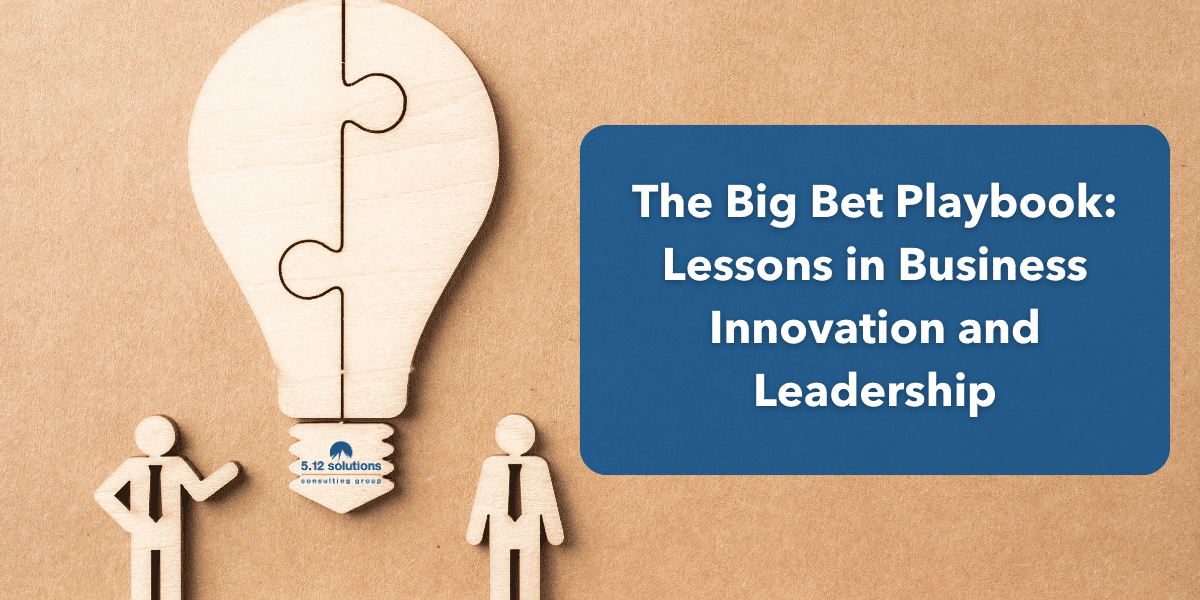In today’s fast-paced business world, innovation and leadership are more critical than ever. But what does it take to lead effectively in high-stakes situations and drive meaningful change? In a recent discussion with John Rossman, we explored the key strategies for navigating business innovation and leadership. Here’s a breakdown of the core insights that can help you become a more effective leader while driving transformation within your organization.
A Systematic Approach to Business Innovation
To grow outside the core business, organizations must break free from existing silos. This requires a structured, strategic approach—one that aligns clear objectives with creative freedom while ensuring diverse voices are heard. Companies like Amazon have demonstrated that reversing traditional business thinking and implementing expert coaching can lead to transformative results. Through a focus on clarity, patience, and structured decision-making, teams can operate more effectively, make smarter bets, and move forward with confidence.
Effective leadership is rooted in the ability to communicate a clear vision while maintaining the flexibility to pivot when necessary. Leaders who create alignment and encourage open, honest discussions within teams are better positioned to foster innovation and performance. The focus should be on creating clarity in communication—whether that’s defining a problem, testing assumptions, or facilitating tough conversations about risks and opportunities.
The Power of Narrative and Debate
A key takeaway from our discussion is the power of narrative-based leadership. Moving away from slide-driven presentations allows leaders to drive critical conversations in a more meaningful way. Instead of allowing the loudest voice to dominate, narrative-driven discussions create a space for rigorous debate, ensuring that all perspectives are heard and considered. This approach fosters deeper thinking and allows teams to engage in problem-solving without bias, leading to smarter, more well-informed decisions.
The ability to facilitate open debate and create an environment where ideas can be tested without personal conflict is essential for improving performance. When communication within teams is structured around the exchange of ideas and constructive feedback, it can accelerate innovation and performance at work. This shift not only improves team dynamics but also helps organizations align around shared goals and strategies.
Learning from Business Legends
When studying the habits of successful leaders like Jeff Bezos, Steve Jobs, and Elon Musk, three critical leadership traits stand out:
- Creating Clarity: Effective leaders start with a well-defined problem and hypothesis. Without clarity, businesses risk moving forward without a clear roadmap, which leads to wasted resources and a lack of direction. Great leaders provide their teams with clarity, which in turn drives productivity, motivation, and ultimately, results.
- Maintaining Velocity: Innovation is not just about starting strong—it’s about sustaining momentum over time. Many organizations lose steam once new initiatives become part of routine operations. Leaders who maintain energy and engagement throughout the process achieve more meaningful, lasting results. This continuous push forward, combined with clear communication and the ability to keep teams aligned, results in sustained performance improvement.
- Accelerating Risk and Value Testing: Instead of committing to a solution before fully understanding the risks, successful leaders isolate key assumptions and test them early. This allows them to make decisions based on validated insights, reducing the chances of costly mistakes. In leadership, learning to embrace risk and quickly test new ideas can create a culture of innovation and adaptability.
A Smarter Approach to Strategic Planning
Too often, strategic planning becomes a complex exercise in goal-setting that doesn’t solve the real problems businesses face. A more effective approach focuses on identifying the core issues, defining hypotheses, and testing assumptions early. This ensures that organizations are investing in the right initiatives at the right time. Books like Good Strategy, Bad Strategy by Bill Rumelt provide frameworks that can help distinguish between solid strategies and superficial goal-setting.
In leadership, the ability to simplify strategic plans and break them down into actionable steps makes all the difference. Clear communication, focused execution, and continuous feedback loops will not only drive innovation but also ensure long-term success.
Driving Business Innovation Through Leadership and Workplace Communication
Leadership is about much more than making decisions; it’s about communicating those decisions effectively. In the workplace, leaders must learn how to listen as much as they speak. This active listening allows them to better understand the needs of their team, identify potential roadblocks, and communicate solutions in a way that resonates.
By embracing these principles, leaders can foster a culture of performance, drive innovation, and lead their teams with clarity and purpose.
Want to dive deeper into the conversation? Listen to the full episode here: https://512solutions.com/new-podcast-big-bet-leadership-in-high-stakes-situations/.
Want to foster innovation and improve team dynamics?
Effective leadership requires strong communication and the ability to navigate tough conversations. Download the Productive Conflict Toolkit for free and learn how to turn workplace conflicts into opportunities for growth, collaboration, and lasting success.

